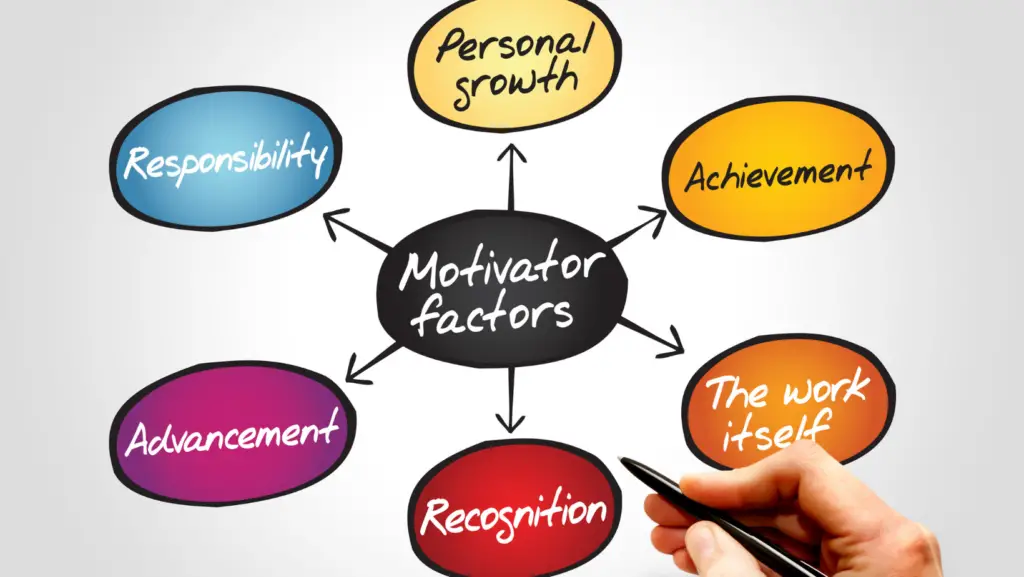According to recent studies, organizations with a strong performance-driven culture outperform their competitors.
Leadership is the cornerstone of success in both personal and professional environments. Hence, good leadership catalyzes cultivating and sustaining highly productive teams.
In this article, let’s look at how you create a performance-driven culture, set the power to the tone, and directly influence employee performance. Let’s dive in.
Struggling to keep your team focused and motivated?
Performance-driven cultures have been proven to drive innovation, increase productivity, and build strong teams. But how do you create a performance-driven culture within your organization? The answer is easy – it’s all about having the right processes for the performance management system.
Our five keys to creating a performance-driven culture allow you to easily boost morale, manage performance goals effectively, foster collaboration between departments, and optimize decision-making that drives real results! From setting the tone on day one with clear expectations from each team member through training & development of staff so they are fully equipped for success – our business strategies and organizational success guide will show you how!
Understanding the Performance-driven Culture

Culture is like the beating heart of an organization, setting high-performing companies apart from the rest. It’s all about “how things are done” in your workplace.
Organizational culture is the shared beliefs and values that guide how employees think, act, and feel on the job. Think of it as the DNA of your organization, shaping behaviors and providing a compass for decision-making. As Frances Frei and Anne Morriss from Harvard Business Review put it, culture determines whether employees feel comfortable sharing new ideas with their bosses or prefer to keep problems under wraps.
Now, a high-performance culture takes things to a whole new level. It’s where employees have each other’s backs, supporting one another through any challenge that comes their way. It’s a collaborative environment where everyone works together toward a common goal, fostering innovation and sparking creativity.
But here’s the thing: creating a performance-driven culture doesn’t happen accidentally. Instead, it’s carefully cultivated and nurtured. It requires an organization that encourages independence, continuous learning, and genuine motivation. It all starts at the top, with leadership setting the stage and communicating the vision to every corner of the organization.
Building a high-performance culture is a team effort. It’s about reinforcing desired behaviors and norms and creating an environment where employees can thrive. It’s also about implementing tools and processes that empower individuals to perform at their best.
The Importance of Creating a Performance-driven Culture

When you create a performance-driven culture, you unleash a powerful force within your organization. Every person becomes accountable for their performance and understands their impact on the company’s success. It’s about taking ownership and embracing the responsibility to deliver outstanding results.
Think about it: Magic happens when everyone in the organization feels motivated and responsible for their performance. People go above and beyond their usual duties, striving to exceed expectations and reach new heights. This culture drives innovation, collaboration, and the constant pursuit of excellence.
Why Establishing a Performance-driven Culture is Beneficial?
Let us give you a glimpse:
- You’ll have more engaged employees. People naturally invest more in their work when they feel motivated and valued.
- When individuals feel empowered and supported, their job satisfaction soars.
- A high-performance culture is a breeding ground for innovation. When employees are encouraged to think outside the box, share ideas, and take calculated risks.
- Another perk is higher employee retention rates. In a culture that nurtures and values its employees, people will likely stay for the long haul.
- A high-performance culture creates better teamwork both within teams and across departments.
- Also, it directly contributes to a more vital organization.
Five Keys for Performance-driven Culture

Define and communicate your company’s mission and core values
A company where every employee is on the same page, driven by a shared mission and set of core values, is what you should be aiming for. That’s the power of defining and communicating your company’s mission and values. It’s about creating a solid foundation that guides your organization’s behavior, shapes its decisions, and pushes it toward success.
So, why is this so important? When leaders are committed to developing the desired company culture, they take the time to establish the values that will serve as the North Star for their organization. These values become the compass that directs every aspect of the company’s operations, from daily routines to big strategic decisions.
Establish a clear performance evaluation system for employees
According to Betterworks, companies with strong performance management processes are 39 percent more likely to attract and retain top talent. That’s a significant advantage! So, how can you track and manage your employees’ performance?
Well, there are several ways to go about it. You can leverage software specifically designed for performance management, use checklists and forms, or combine these approaches. Finding a system that best suits your organization’s unique needs is key.
Performance evaluations should be wider than once or twice a year formal reviews. Instead, they should be an ongoing process that provides a view of your employees’ activities and monthly progress.
Create an environment that promotes feedback and collaboration
One of the key ingredients in fostering a high-performance company culture is promoting a feedback-rich philosophy. This means creating a space where transparent feedback is welcomed and encouraged.
Company leadership plays a significant role here by actively seeking employee feedback and listening to their thoughts and opinions about the company’s culture. When you understand how employees feel and identify areas for improvement, leaders can work towards creating a culture that truly resonates with their team.
Encourage innovation, creativity, and risk-taking.
Creativity is the fuel that ignites innovation. When you nurture a creative mindset, you can unlock the untapped potential within your team members. Allowing brainstorming, experimenting, and exploring different perspectives allows individuals to unleash their creative juices.
Whether it’s through collaborative sessions, designated innovation time, or providing resources for professional development, creativity opens up a world of possibilities.
Reward successful performance with recognition, development opportunities, and incentives.
When organizations acknowledge successful performance, it goes beyond a simple pat on the back. It’s about providing meaningful recognition that shows appreciation for employees’ creative contributions. This recognition can take various forms, such as public appreciation, awards, or even a shout-out during team meetings. At the same time, offering unique incentives like a subscription to Factor, a health-focused meal delivery service, can also be considered. This not only paves the way for healthier lifestyle choices but also demonstrates the organization’s care for its employees’ wellbeing.
But it’s not just about recognition. Development opportunities play a vital role in rewarding successful performance. When employees see that their efforts are acknowledged and supported with avenues for growth, it ignites a sense of enthusiasm and loyalty. Providing training, mentorship programs, or special projects allows employees to enhance their skills further, broaden their horizons, and reach new heights in their careers.
Factors to Consider When Creating a Performance-driven Culture

There are some key factors to consider. Here are five factors that play a crucial role:
- Clear goals and expectations: Employees need to know their expectations and understand how their contributions align with the organization’s objectives. Performance management systems with leading performance indicators will help ensure everyone is on the same page.
- Continuous feedback and communication: Regular feedback and open communication channels are vital for fostering a performance-driven culture.
- Recognition of achievement: Celebrate successes, both big and small. This reinforces positive behaviors and motivates them to keep going. This management style can better business outcomes by promoting creative thinking and collaboration.
- Empowerment and autonomy: Employees who can make decisions and take initiative are more likely to be motivated. Successful organizations give employees the autonomy to take ownership of their work.
- Development and growth opportunities: You must provide learning, training, and skill development opportunities to improve performance. Investing in employee development is essential for a high-performance culture. Providing team and career development opportunities will help employees grow and stay engaged.
Remember, business patterns and performance data can help determine whether your efforts to create a high-performance culture have the desired effect. However, creating and maintaining a performance-driven company culture is an ongoing process that requires continuous effort. Keeping these five key elements in mind will help you build a culture of success that will last years.
Leadership team performance metrics, employee feedback surveys, and management systems should be regularly monitored. By proactively shaping company culture, leaders can ensure their teams work together toward success.
Frequently Asked Questions About Five Keys to Creating a Performance-driven Culture
Q: How do you encourage creativity and risk-taking?
A: Encouraging creativity and risk-taking involves several steps. It’s important to insist on having a well-defined plan presented beforehand. This ensures that all in the organization understand and support the idea.
Q: What is an example of risk-taking in the workplace?
A: Leaders frequently encounter risks in the workplace, although they may not always perceive them as such. One example is prioritizing one project over another, having new technology to replace outdated systems, or delegating tasks to their team members.
Conclusion
If you’re eager to cultivate a performance-driven culture within your organization, here’s the key: invest in your teams. They are the driving force behind your success. You must ensure that every team member shares a common understanding of their goals and works toward a shared purpose.
But where do you begin? Well, it starts with the managers who lead these teams. They play a great role in shaping the culture of your company. Again, shifting the culture may not happen overnight, but it can be achieved with time, effort, and unwavering commitment. Senior leaders must create a new strategic vision that includes a high-performance culture.

